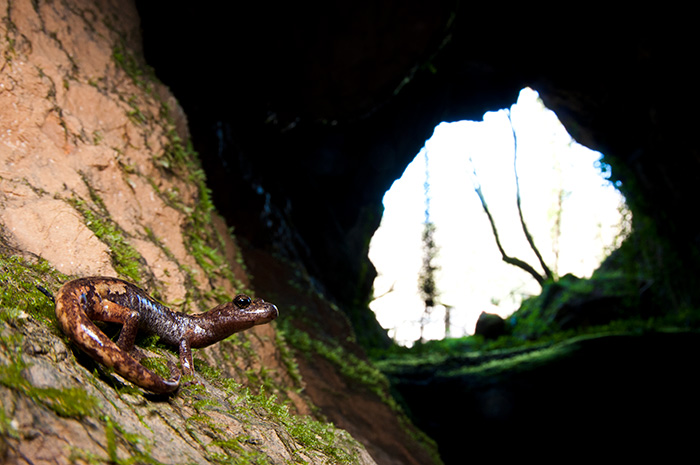
Caves. Is there something more magical and secret? I don’t think so.
There are many underground sites known today, scattered all over the world, and at least that many have not yet been discovered and explored.
The climatic conditions are very special, the temperatures (excluding the areas near the entrance) are almost constant throughout the year, as well as the relative humidity, whose values are approximate 99%.
It is precisely for these extreme conditions that the fauna of the caves is strongly adapted and is constituted by species hardly retrievable in epigean environment.
Each of these organisms has its own function and its own peculiarities.
There are three types of animals that frequent the caves, troglobite, ie those that live exclusively indoors and are the most adapted, the troglophile, that living in caves but they can also do without it and troglosseni that sometimes occur. The seconds are the most abundant.
Don’t go in some kind of cave of some kind of foreign country to see some of these creatures.
Just think of bats, many are regulars of the caves not too much frequented by tourists. In most of the Italian caves, maybe you will not have scenarios like “bat cave” with lots of bats flying around, but you can see some "roost" formed by different individuals. To avoid disturbance and compromise its survival would be better not encounter, or don’t frequent cavity with bats.
Other Troglophile organisms that may be encountered are several species of amphibians, such as the Italian Stream Frog (Rana italica), the fire salamander (Salamandra salamandra) and Cave salamander (many species of Hydromantes sp.). The latter is the most characteristic, because, they’re lungless, and only breathing with the skin, need very high humidity, this makes the caves one of the best candidates for this creature home. In Italy there are 7 species, 3 of which are continental and 4 only occur in Sardinia.
One of the most famous amphibians in Italy, typical of some caves in the Dinaric Alps, is the olm (Proteus anguinus). It’s characterized by covered with connective tissue eyes, so they’re blind, depigmented skin, so the color is totally white, excluding the external very vascularized gills, whose color ranges from pink to bright red.
But the most common animals in the caves are certainly invertebrates. Some of them are endemic, and very very special.
An example is the cave cricket (Dolichopoda ligustica), an orthopteran with very clear skin and with very long antennae, which are essential for a life in the dark.
There are also beetles equipped with sensory bristles on the elytra, to have a greater sensitivity.
Common in many natural and artificial cavities is Tetragnathidae spider Meta menardi, a large spider, who builds webs to entangled prey, diplopods and other organisms, sometimes this spider eat the cave salamander young.
In caves with water there is also the possibility to find different species of crustaceans, "shrimp" of the genus Niphargus sp. and some more similar to real shrimp, such as gender Troglocaris sp.
One species, certainly worthy of note, is the Oxychilus draparnaudi, a gastropod that lives purely in caves but you can find it in a similar epigean conditions, its peculiarity is that it is a predator of moths. This is due to the low temperatures that make it very slow reflexes of the moth, which is then unable to move.
Some of the animals just mentioned are easy to find in other contexts, such as bunkers, and other structures carved into the mountain for war purposes. This is because of the similar climatic conditions.
Since these areas are very sensitive and delicate, is necessary manage the tourist caves in the most appropriate way possible, by limiting the annual inflows, to decrease the provigion of CO2 and changes of temperature, without considering the disturbance directly to the fauna.

